* We visited Puno April 22-26, 2015
We left Arequipa to make our much anticipated return to the Lake Titicaca area. This time around we would visit Puno, on the Peru shore (we previously visited the Bolivia side), and instead of traveling with Stef and Doug, we were actually meeting up with Danny’s parents, Sue and Jim. We were so excited to see the Kach’s and hang out for a few days before they embarked on their own tour through Incan history in Cusco, the Sacred Valley and Machu Piccu. It’s been fun for us to receive guests in our new home, which isn’t really a home so much as it is the travel life. But South America was becoming more and more familiar by this point; it had been almost 6 months since our arrival, our Spanish language skills were peaking, and since we had been to the Titicaca region already we were familiar with the culture as well as the cuisine (not much variety in the cuisine, pretty much the same 7 popular entrees we saw in Bolivian Titicaca areas).
Lucky for us, we were also already familiar with the altitude, considering Lake Titicaca sits at a dizzying 12,500 feet above sea level. But we knew Sue and Jim would need time to adapt to the high life, so we didn’t plan a busy schedule of site seeing. Our hotel in Puno, El Libertador, provided the best possible place for some chill time. It is a 4 star luxury hotel that sits on its own small island just over a small bridge at the outskirts of town. The island is also a nature reserve and bird estuary with a walking trail around the whole property, providing clear views of the marshy shoreline of Lake Titicaca. Danny’s favorite part was access to the essential ingredients for a tri-bathalon: shvitz, sauna and hot tub. But for me, I loved the hot, clean shower and the fact that we could flush toilet paper down the toilet. It was definitely the most luxurious place we stayed during our whole stint in South America!
We spent a fair amount of time sitting in the bar area partaking in heated matches of Canasta. But we also ventured into town to see a ship museum, the main plaza and church, and to absorb the rhythm of a real Peruvian town. The town isn’t polished up for tourists and is comprised of mostly bland brick buildings, busy tuk tuk traffic and local markets. Our hotel was really the most beautiful building and area we saw over our 5 days in Puno, as the town is really more of a jumping off point for adventures to nearby sites like the islands of Uros and Taquile. We did do a day tour out on the lake to visit the floating reed islands of Uros and a larger island called Taquile, which unfortunately became Ta-Pukey for me. One day we visited an Incan fertility temple outside of town and got some fun pics with stone dicks. Thank goodness my future family has a good sense of humor! We wrapped up our time together taking in breathtaking scenery from aboard a 5 hour train ride from Puno to Cusco. Anyone who knows Jim knows how big of a train aficionado he is, and being with him for a full service train experience was definitely memorable. Once we made it to Cusco we split up to check in to our respective hotels and then met up for a farewell dinner. We were all excited for our upcoming tours of Cusco and the surrounding areas, and we said good bye knowing we would be able to share stories of our experiences once we were all back home in Chicago in a few weeks.
Here are some more details and highlights from our time in Puno…
- We did a sunset walk around our hotel on the nature trail. The sunset provided a perfect backdrop for Jim to get in his daily Tai Chi practice. Once the sun was down we had a phenomenal view of Puno’s city lights.
- We found a really great Peruvian restaurant in town called Mojsa. Funny enough we got into talking to the owner’s wife and turns out she’s from Minnesota but lives in Puno now. We imagined she was the only American ex-pat living in Puno!
- Our day trip to the floating reed islands of Uros and then to Taquile provided us with great insight into the local culture. Uros is a group of around 40 islands that literally float with the lake currents. They are built from layers of totora reeds that the residents harvest from around the lake and continually replenish in carefully placed layers in order to make sure the island doesn’t sink. Each island is home to a family, or extended family, who live communally. The Uros community as a whole divides up incoming tourist groups onto separate islands so that tourism money is spread evenly among the families. Our group was welcomed warmly onto one of the islands with songs from the residents and a demonstration on how the islands are fabricated. Our tour guide actually translated the demo from the local language, Aymara, to English. We got to explore the island, and as our feet squished into the soggy reed ground, we peaked into the traditional homes, also made of reeds. Then the men of the island took us out on a ride on a traditional totora reed boat. Two adorable young girls came along for the ride, the older of who sang songs for us and then cleverly asked for tips when she was finished.
- On the same day trip we ventured out further into the lake to the island of Taquile, which is actually just a few hour boat ride from, and very close and similar to Isla del Sol, Bolivia, where we stayed with Stef and Doug. However, I found the culture to be much richer on Taquile. The island is home to only around 1700 peeple and the hierarchy of the society is noted by the hat each person wears. Certain color hats represent single people versus married people, and the size of the tail of the hat represents the person’s stature in the community. These hats are special in that they are knitted on the island with a very special traditional type of weaving that has been passed down through generations. The hats are actually knitted by the men only, but the women have crazy loom skills and weave gorgeous fabrics. Taquile has received international recognition for their unique textile traditions. And it was easy to see why. The patterns are so intricate and the thread is very fine. Once we climbed the hundreds of steps to the top of the island we visited a 3 story weaving museum/store. The views from atop provided fantastic views of the terraced farm land on the island as well as the deep blue lake, and we also were able to observe some local islanders just hanging out. Our group had lunch at a small restaurant while a local musician played traditional Peruvian folk songs on guitar and wind pipe. Of course, we got to hear El Condor Pasa, the popular Peruvian tune that Simon and Garfunkel stole for their song “If I Could”, and that would come to be our soundtrack for Peru. Unfortunately for me, I must have literally eaten a bad egg at lunch and was almost immediately ill. I spent the entire walk down the hundreds of steps feeling like complete crap until finally it all came up on someone’s farming terrace. First puke of the trip for either Danny or I, can’t believe it actually took almost 6 months!
- At the top of Taquile we saw one of those typical arrow signs that points to different cities in all directions and notes the distance from the sign to the city. I took a picture of it because there were a few cities on there that we had already visited and some that we planned to visit. The furthest away city they had on the sign was Lhasa, Tibet. In a small island town in the middle of Lake Titicaca in Peru the local people calculated the distance to a small town on the complete other side of the world! What a crazy adventure we are on, as I am sitting in Lhasa right now writing this post!
- Went outside of Puno a bit to a nearby town to see an Incan fertility temple. Made our own volume of Dicks Pics (Deadheads will understand), and laughed a lot.
- Maybe one of the neatest things we did with the Kachs was take a classic train from Puno to Cusco (6 hours). The cars were all set up like dining cars except for the last 2 cars which were a bar and then a panoramic car with an open-air back. We were served a great lunch, played some more canasta and spent a lot of time glued to the windows taking in the view. We got some great pictures out the back of the panoramic car, including about a zillion shots of a rainbow in a lush green valley with the Andes mountains as a backdrop. At one point the train slowed to pass through a station and locals chased behind the train selling handmade mini alpacas. Danny and I bought one for his mom, Sue, and it became her lucky charm for a complete takeover in Canasta!
To see all of our photos from Puno on Flickr, click here.

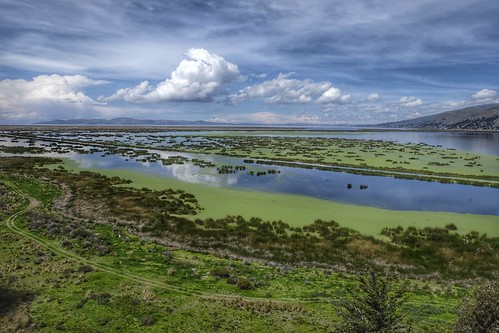

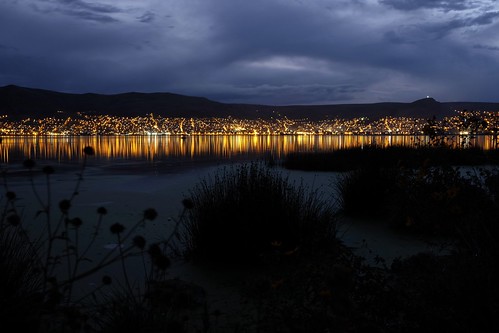
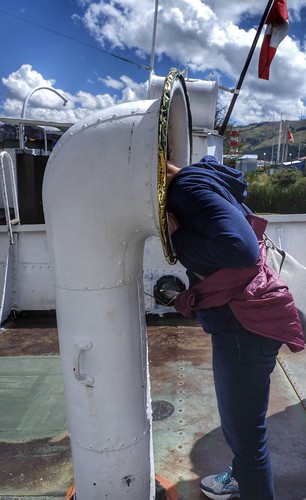

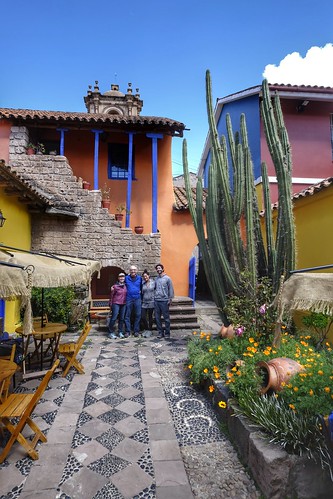
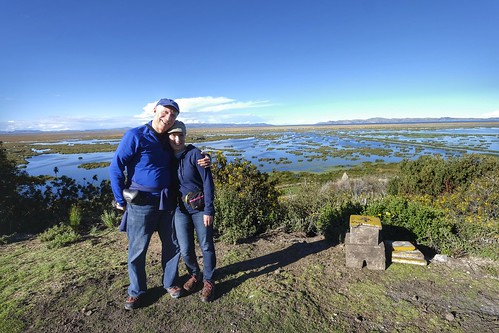
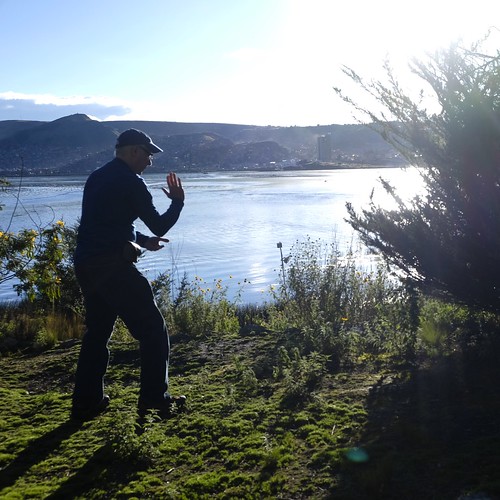

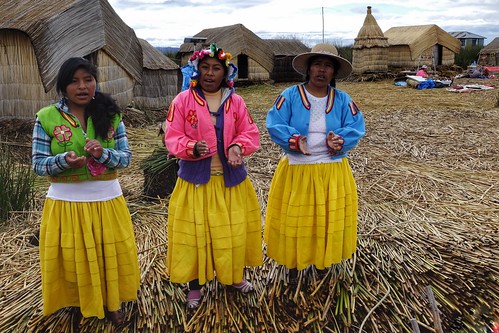

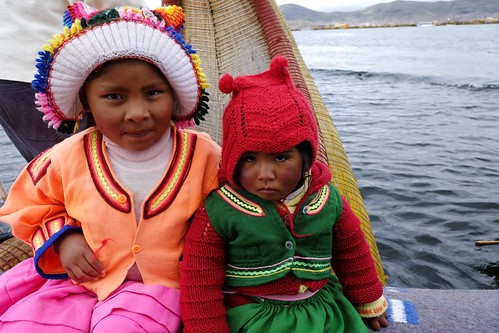
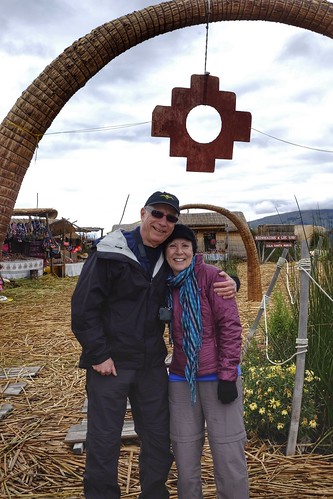


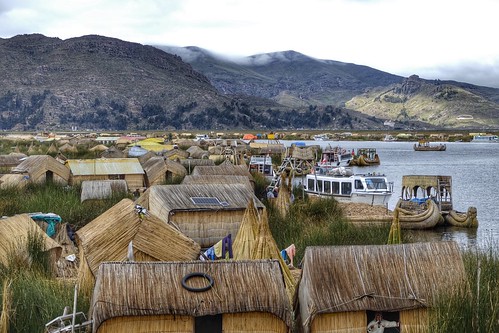


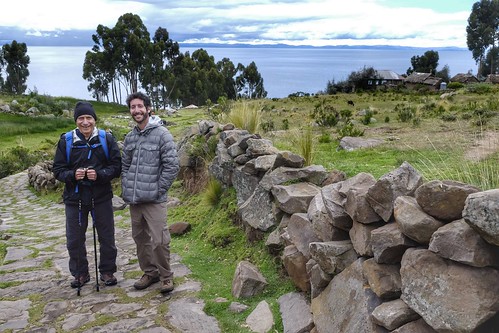
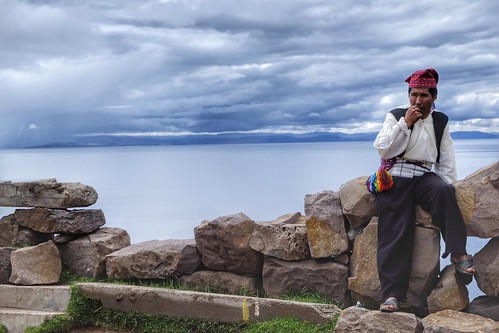
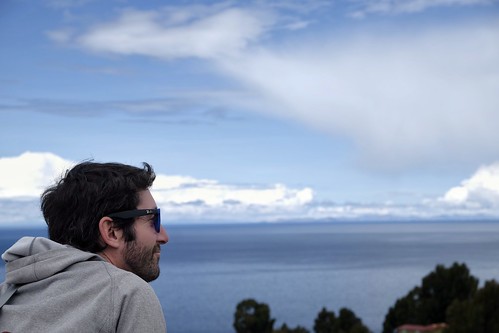
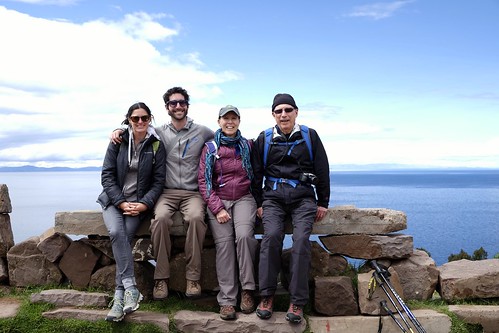
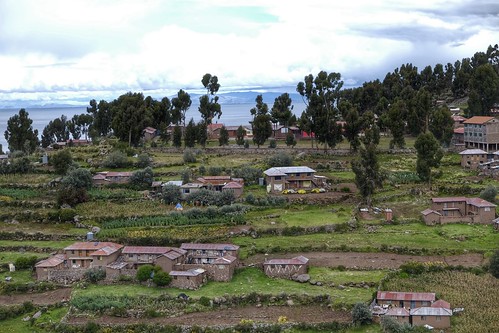

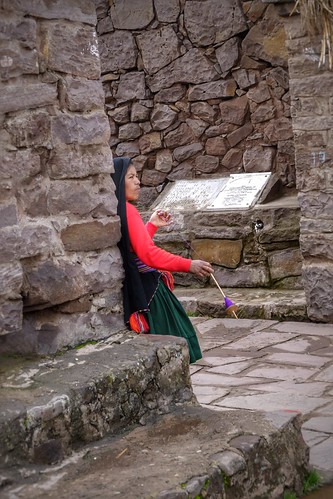
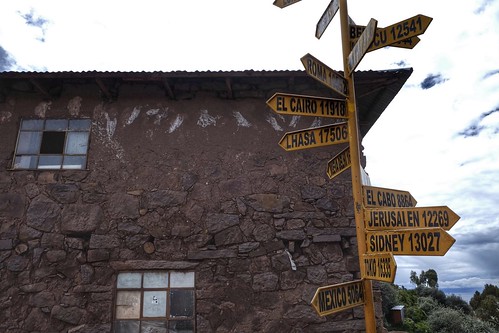
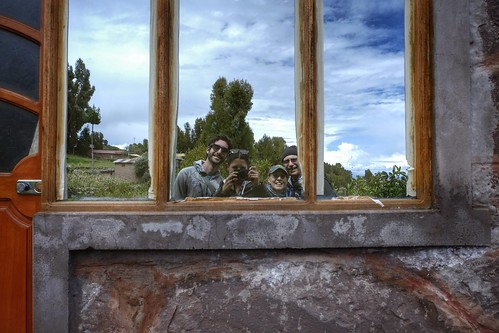
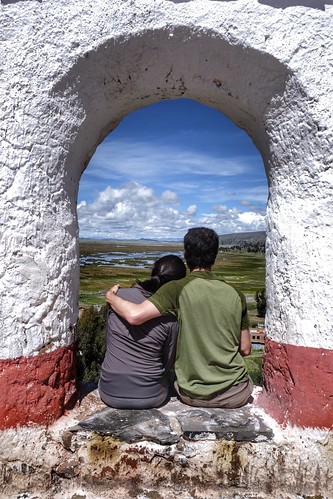
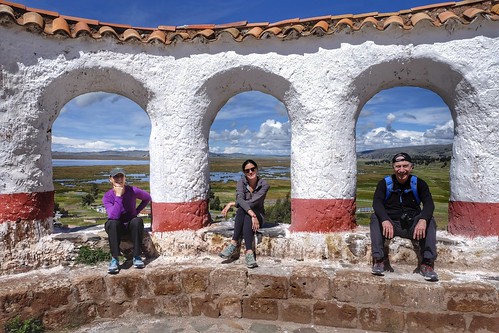
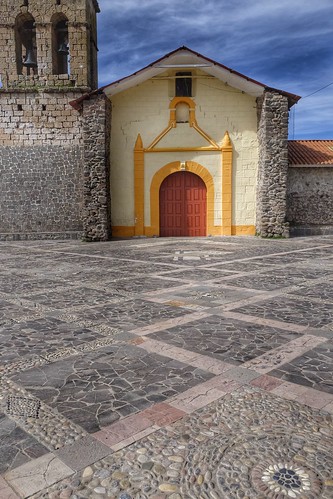
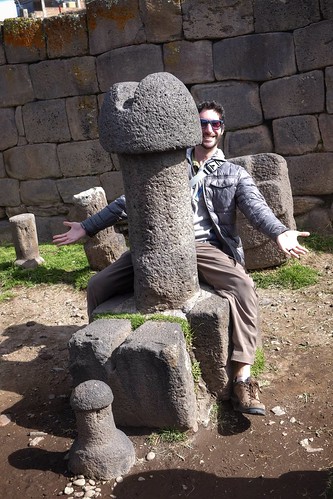

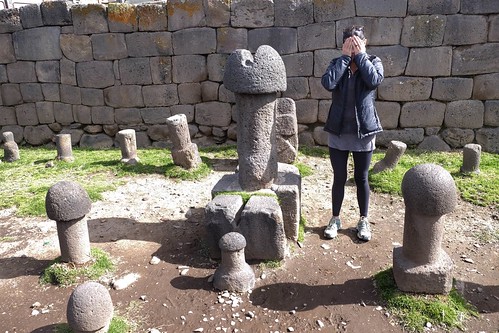

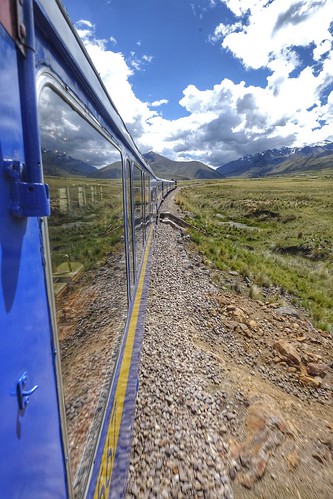
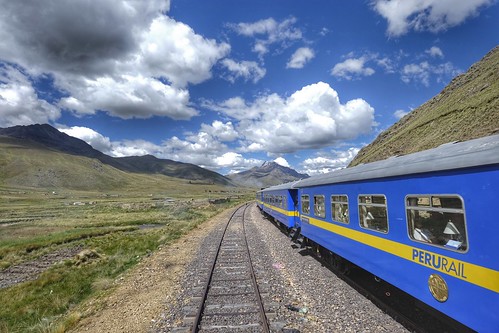
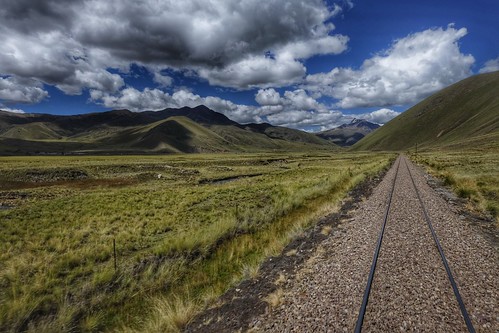
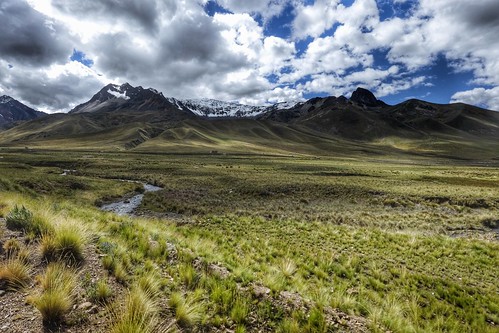
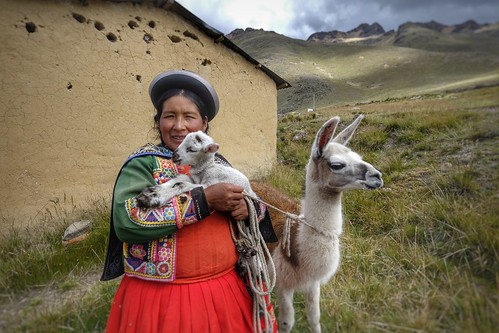


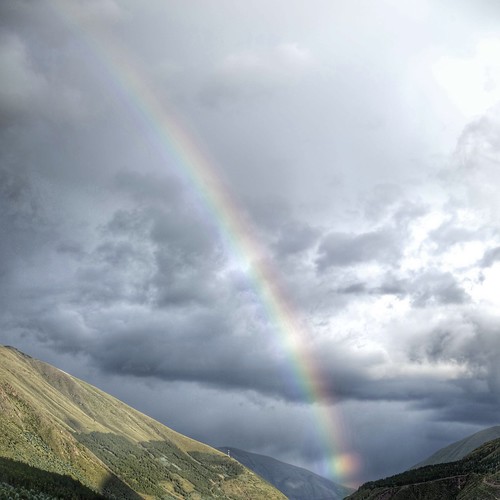
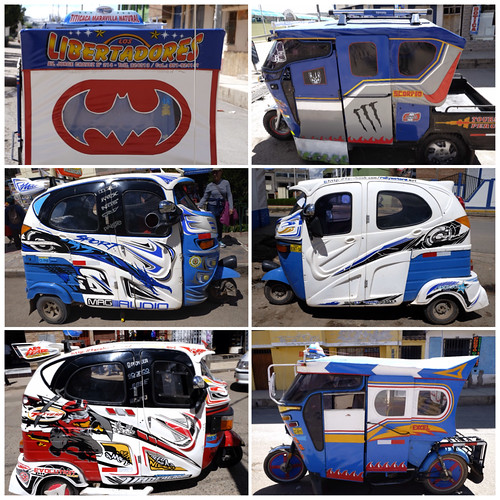
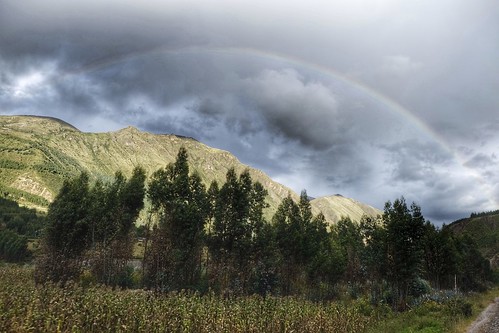
Lived this post esp the part about the train trip and the hats….. So fascinating that they have a caste system and have to wear hats to outwardly show their status! Still waiting to hear about your current trip. . Enjoy China. See you soon. 😄